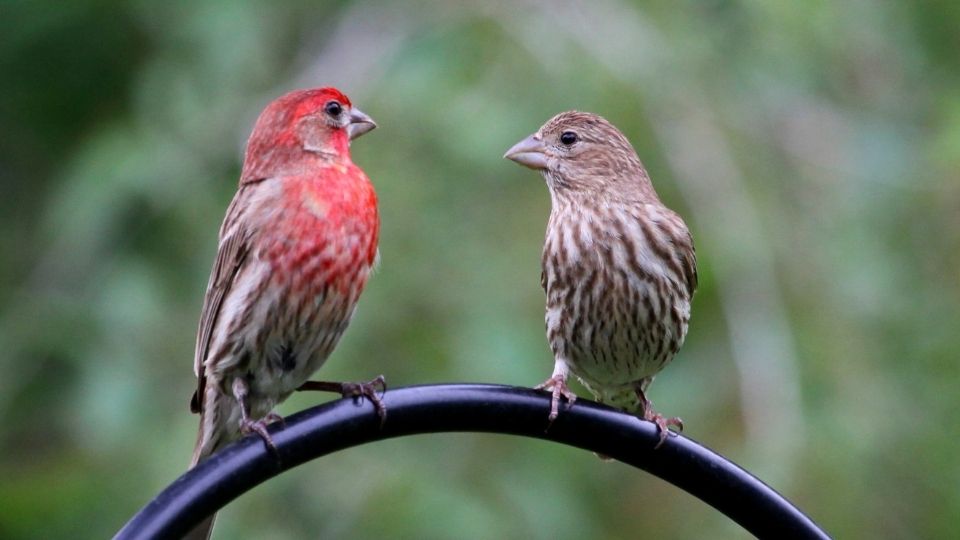The House Finch is a bird in the finch family Fringillidae. Colorful, and cheerful when it sings, the House Finch is common from coast to coast today, and a familiar visitor to backyard feeders.
House Finches are found in most of the continental United States, but it never used to be that way. Birdwatchers only spotted the traditional House Finch in the western portion of the United States (and Hawaii) until the 1940s.
So, how did this bird species make its way out east? A pet shop owner in New York captured and sold House Finches as pets, which was very illegal. Fearing arrest and prosecution, these birds were set loose into the wild.
If you live in the eastern United States and love watching House Finches nibble away at your feeders, you can thank a law-breaking pet shop owner from the 1940s!
How to Identify a House Finch Songbird
The House Finch is easy to identify simply by its coloring and size, but there are stark differences between male and female House Finches.
Male
The male House Finch is the easiest to identify quickly.
It has a rosy red color with a higher contrast of red around its head and breast. They also have streaks of brownish feathers on their backs and tail feathers.
In the video below, we rounded up 10 little known facts about House Finches!
Female
The female House Finch is a little more tricky to identify, as they look more like a house sparrow with a few key differences.
The coloring of a female House Finch is all brown without any notes of red color seen in male House Finches.
While the coloring of a female House Finch is similar to a house sparrow, they are much smaller in size with a smaller and sharper conical-shaped bill and tend to be a lighter brown hue than the House Sparrows.
Pictures of Finches



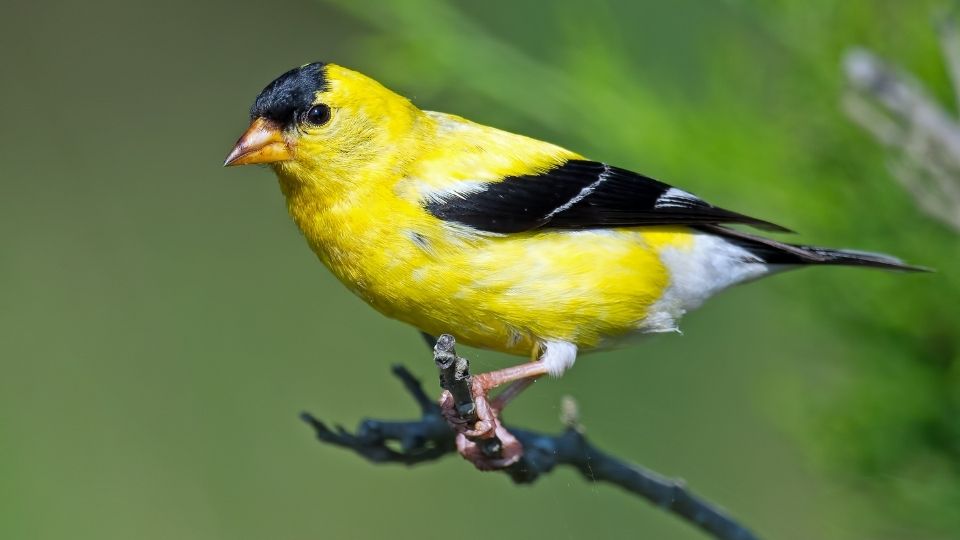

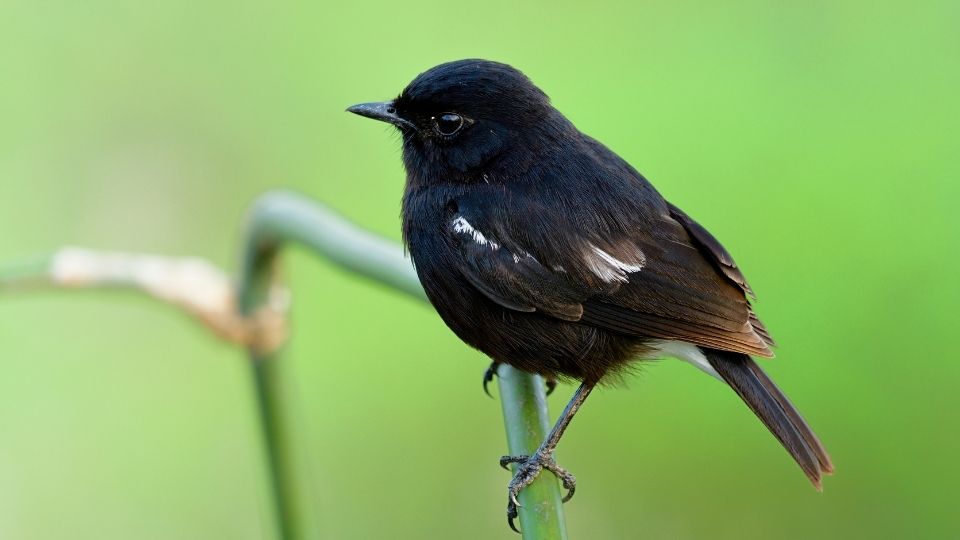
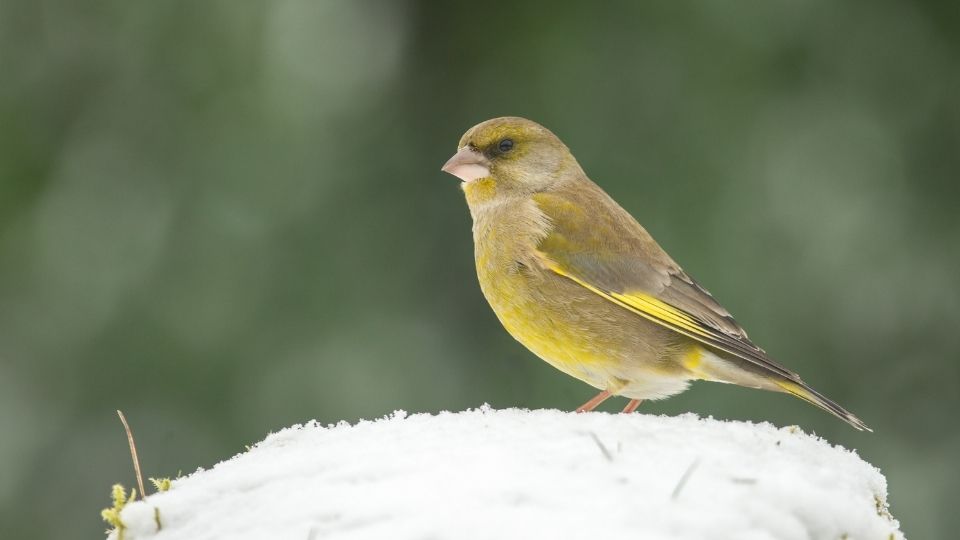
Is There a Difference Between a Finch and a House Finch?
House Finches have bright red-orange to red plumage on their head with brown feathers on their wings and sometimes face. Purple Finches have a dark pink or reddish hue that goes down towards their white bellies.
They are both of similar size, and the coloring of young males and female finches makes things more complicated because they both have a brown and white pattern in their feathers.
For male House Finches and Purple Finches, the best method for telling the songbirds apart is by the coloring of their bellies.
Male House Finches usually have a streak of brown on their underbellies. The red on the male House Finch is much brighter and more noticeable.
On the other hand, Male Purple Finches have a more subtle and understated red tone with a white underbelly and no streaks of brown.
What is the House Finch Habitat Like?
House Finches are often found in suburban areas hanging out around bird feeders and making nests in unusual places! They are no strangers to human habitats.
They love sunflower seeds and thistle, so feeders that host these delicacies are bound to attract local finches.
They reside in coniferous and deciduous forests across the United States and are often found in all 50 states.
These North American birds prefer to nest in dense areas with plenty of shade and places to hide, so there aren’t frequently found in the Rocky Mountains.
They often construct their nests in trees but sometimes build nests on the sides of buildings, street lamps, or even abandoned nests.
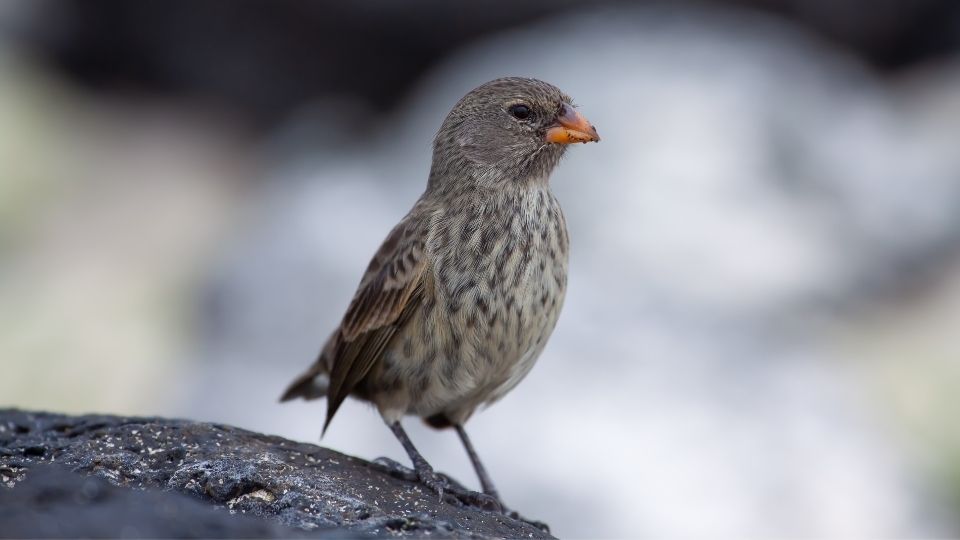
When do House Finches Migrate?
Not all House Finches migrate. The House Finches in mild weather locations in the south or western United States typically stick around for the winter months.
Finches in Canada or the eastern part of the United States around the Great Lakes region typically head south for the winter.
They travel in flocks and take their migration day by day. They will travel a great distance during the day and stop to feed and rest during the nighttime.
Some flocks of finches travel south to places like North Carolina, while others travel as far down as Mexico.
What’s interesting about House Finches is that the female bird often travels farther south than male House Finches.
It is believed that since the females are smaller, they require warmer temperatures than the males, making the trek further south than their male counterparts.
House Finch Lifespan
The lifespan of a House Finch is around eleven years and seven months.
However, life in the wild is dangerous, and many may not live to see their 11th birthday. Things like available food sources, cold winters, and predators cut the lifespan of the House Finch short.
Even in suburban areas, House Finches have a long list of predators attracted to their red feathers.
Predators such as cats, American crows, rats, and snakes are just a few predators looking to make a House Finch their next meal.
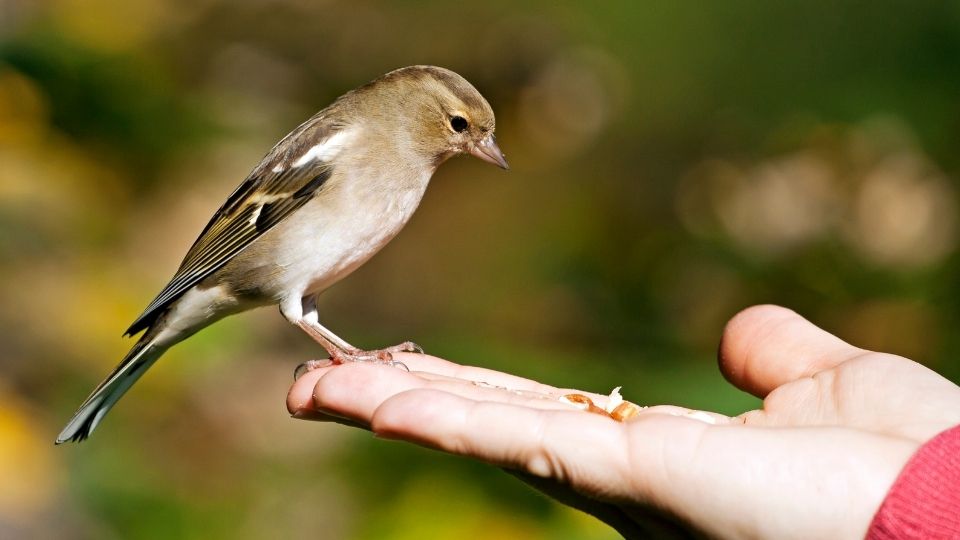
House Finch Diet and Feeding
House Finches typically live off things like nuts, berries, and seeds.
They love thistle and sunflower seeds if you want to attract a House Finch to your backyard birdfeeder. They also love eating weed seeds and berries in the warm summer months.
The House Finch often prefers mulberries and cherries. While their diet consists primarily of seeds, fruit, and nuts, on rare occasions, they will also eat insects in the summertime.
House Finch Breeding Season and Eggs
This bird species starts its breeding season in March and lasts through to August.
In one season, a female House Finch can raise six clutches of eggs, but in most cases, they only raise two per season.
Each clutch of eggs can have between 2-7 eggs, with 4-5 being the average. The incubation period lasts about 13-14 days, and the nestling period, where baby house finches stay in the nest, lasts about 11-19 days.
House Finch eggs are pale blue or white with tiny black and light purple flecks.
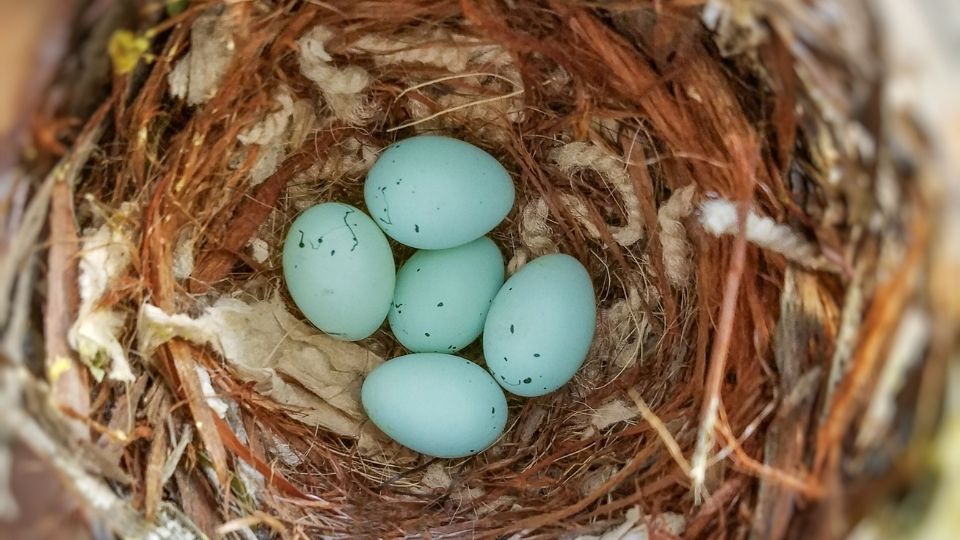
House Finch Hatching and Nestlings
Once hatched, baby House Finch broods typically leave their nest in 11-19 days.
Even after leaving the nest, the male House Finch continues to feed the flock even after the adult female bird has started on a new clutch of eggs.
The male bird forages for fruits and nuts and then regurgitates its food to its young flock. Is it gross? Yes. But regurgitating food is a fast way to deliver nutrients to very young birds.
If You See a Finch On The East Coast, Thank A Pet Store Owner!
Like the European Starling or the House Sparrow, the House Finch isn’t native to the Eastern Parts of the United States.
However, their mild nature and bright red feathers make them welcome additions to the Eastern community.
If you live in the East and love watching finches at your feeders, thank a 1940s pet shop owner (and the National Audubon Society for banning the sale of these birds).

